From lawns littered with daffodils to orchards filled with blossom and woods carpeted in bluebells, put a spring in your step with a visit to a National Trust garden in Hampshire, or on the Isle of Wight. Here are six spring highlights to look out for:
- Creamy canopy of scented magnolia at Mottisfont
- Native English bluebells in Morgaston Woods at The Vyne
- 10,000 tulips and other spring bulbs at Hinton Ampner
- Apple blossom in Sandham Memorial Chapel’s orchard, set in a mini flower meadow
- The cherry orchard at Mottisfont, underplanted with naturalised spring bulbs
- Swathes of daffodils across Mottistone Gardens, Isle of Wight
PICTURED ABOVE: Magnolia at Mottisfont | National Trust Images, John Millar
Tulips at Mottisfont | National Trust Images, Jonny Norton
Mottisfont, nr Romsey
Creamy canopy of scented magnolia at Mottisfont
Gardens open 10am to 5pm
From late March, Mottisfont reveals a spectacular spring offering, when the magnolia tree by the stableyard comes into flower. It creates a broad canopy of scented white blossom, which in full bloom makes a stunning shot for springtime selfies. You can stand beneath the tree with the gardens behind you, or take a photo from one of the benches on the other side of the flint wall, with the magnolia arching behind you.
What else is there to see? Hundreds of fragrant daffodils litter the grass by the house and spread beneath Mottisfont’s famous great plane tree in a mix of cream, white and gold. The parterre is packed with blue and yellow hyacinths and tulips – a good spot to linger for a scented hit – and brightly coloured tulips pop up in the kitchen garden’s raised beds. Wander through to the rose garden for more tulip clusters.
You may also be in time to see the ground beneath Mottisfont’s elegant Jellicoe-designed lime avenue transformed into a carpet of blue by thousands of tiny blue star-shaped chionodoxa flowers.
Mottisfont’s Garden Guides lead free themed daily walks, including a Welcome Walk which provides a general introduction for first-time visitors, alongside more in-depth history and seasonal garden walks. The Welcome Team at visitor reception will be able to advise what’s on offer when you visit. Walks vary daily.
Bluebells at The Vyne | National Trust Images, Karen Legg
The Vyne, nr Basingstoke
Native English bluebells at The Vyne
Gardens open 10am to 5pm
The beauty of this particular bluebell display (aside from the obvious) is its location – the 1.4 mile trail starts right next to The Vyne’s visitor reception point and the entrance to the garden. A broad track (suitable for all-terrain buggies) takes you alongside a magnificent lake and down to the wetlands’ bird hide. Then it’s into the woods to discover carpets of delicately scented bluebells. There are shorter trail options too – look at the coloured waymarkers for details. The best time for bluebell displays is late April and early May.
What else is there to see? Pop by for cheery daffodil displays across the gardens. There are fresh bunches for sale too, at the visitor reception point. Blue, white and pink hyacinths fill the south terrace, and dark purple Queen of Night, pink Menton and pale Spring Green tulips in the walled garden provide pops of colour. In late spring, 40 apple varieties as well as medlar, plum and pear trees fill the orchard with candy-pink and white blossoms – a lovely place for a spring picnic.
Bluebells at Hinton Ampner | National Trust, Simon Newma
Hinton Ampner, nr Alresford
10,000 tulips, narcissi and hyacinths – new displays for 2024
Gardens open 10am to 4pm
In April and May this garden, famous for its spring colour, is awash with tulips; nearly 5,000 in fact, in 12 eye-catching varieties. Displays change every year, and this spring they are particularly lush. n the sunken garden you’ll spot orange-pink Menton and zingy cream and green-striped Spring Green. Peony-looking soft pink Angelique and rich pink fluted Mariette fill borders in the yew garden. Orange, apricot and purple colourways are on show in the kitchen garden, and there are nearly 2,000 bulbs in pots too – look out for the incredible Tulipa acuminata, with its long spidery scarlet and yellow petals.
Narcissi at Hinton Ampner | National Trust Images, Hugh Mothersole
What else is there to see? There are over 10,000 spring bulbs on show at Hinton Ampner – cream and white narcissi and blue and apricot hyacinths jostle with the tulips. Throughout spring, fruit trees and ornamental cherry trees reveal pink and cream blossom in the orchard, the kitchen garden and by the lily pond.
Garden Guides lead free daily themed walks at various times, starting at the potting shed. Ask for details when you arrive.
Hinton Ampner has some of the best native bluebell displays in Hampshire – there are some close to the start of the four mile Dutton Estate walk, and in the beech woods further on you’ll be treated to huge purple-blue swathes. The delicate flowers fringe broad woodland paths, so you can enjoy the blooms all around you. A really uplifting sight.
Crab apple blossom at Sandham Memorial Chapel | National Trust Images, Hugh Mothersole
Sandham Memorial Chapel, Burghclere
Apple blossom and wildflower meadow at Sandham Memorial Chapel
Garden open 10am to 3pm
In this little garden, tucked away in the quiet village of Burghclere, there are some real springtime gems to discover. Beyond the small wooden gate lies a charming orchard and a collection of historic apple tree varieties, many of which are nearly 100 years old. There are picnic benches from which to enjoy the displays of tiny pink and white blossoms, in a meadow setting where wildflowers like ragged robin, snakeshead fritillary, and cowslip litter the tufty grass at the base of the hedgerows. Behind the chapel, young crab apple trees lining the footpath create a frothy white avenue.
What else is there to see? Sandham is very special to many people, and its Garden of Reflection provides a unique floral-filled haven for contemplation and relaxation. In spring, primulas, dwarf daffodils and tulips provide splashes of bright colour, contrasting with soft ornamental grasses, aquilegia, honeysuckle and lavender. Visitors are welcome to bring their own picnics.
Blossom-based craft packs to take home are on offer throughout April, for both adults and older children. Find out more at: www.nationaltrust.org.uk/visit/hampshire/sandham-memorial-chapel
Mottisfont, nr Romsey
The ornamental cherry orchard at Mottisfont, with naturalised spring bulbs
Gardens open 10am to 5pm
In early April, Mottisfont’s small cherry orchard bursts into frothy white bloom. 15 closely planted Mount Fuji cherry trees release a honey fragrance, making them a favourite with visiting bees. A grassy path meanders through the middle of the orchard, drawing the eye to the meadow beyond. If you look down into the tussocky orchard grass you’ll spot splashes of colour from flowers that have naturalised there including tiny pink species tulips and lilac snakeshead fritillaries.
Daffodils at Mottistone Gardens | National Trust Images, Wild Wight
Mottistone Gardens, nr Brighstone, Isle of Wight
Daffodils displays at Mottistone Gardens, Isle of Wight
Gardens open 10.30am to 5pm
These unique gardens, in a sheltered valley setting, are a magical place to experience spring delights. The garden team have planted over 11,000 daffodil bulbs, for rich displays of pure white ‘Ice Follies’ and bright yellow ‘Unsurpassable’ beneath the fruit tree avenue and Mottistone’s grand old horse chestnut trees. You can soak up displays of fragrant creamy double-flowering variety ‘Cheerfulness’ in the tea garden, and yellow and orange ‘Scarlett O’Hara’ in the shady gully. If you wander to the top of the orchard you’ll find a bench to relax on amongst the flowers.
What else is there to see? The mild island climate produces beautiful displays of camelia and magnolia at Mottistone. The avenue of fruit trees fills the orchard with a soft mix of apple, cherry and quince blossom. By late April a mass of bluebells covers the wooded banks at the top of the garden, and the paths beyond leading up to the famous Longstone. In the pictorial meadow, cowslips flower, whilst the borders fill with colour from frittilaria, aquilegeas and perennial wallflowers. Rhododendrons and azaleas flower earlier than on the mainland. By the end of April bright pink and white varieties are blooming profusely in the shady gulley running along the edge of the gardens.
Find out more about these glorious gardens at:
www.nationaltrust.org.uk/visit/hampshire
www.nationaltrust.org.uk/visit/isle-of-wight/mottistone-gardens-and-estate
Words by National Trust
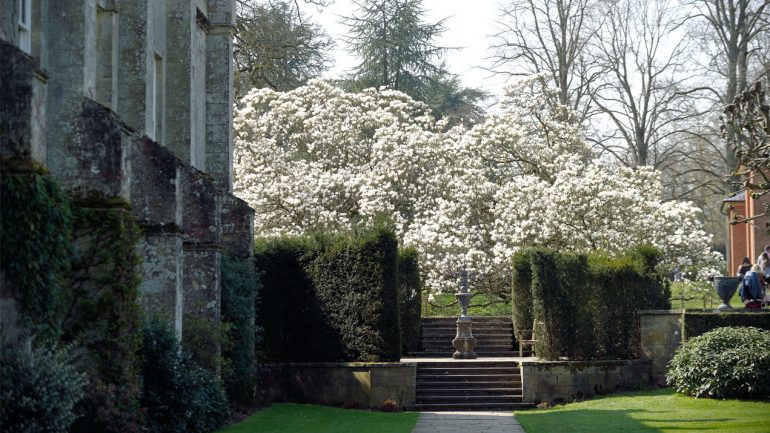
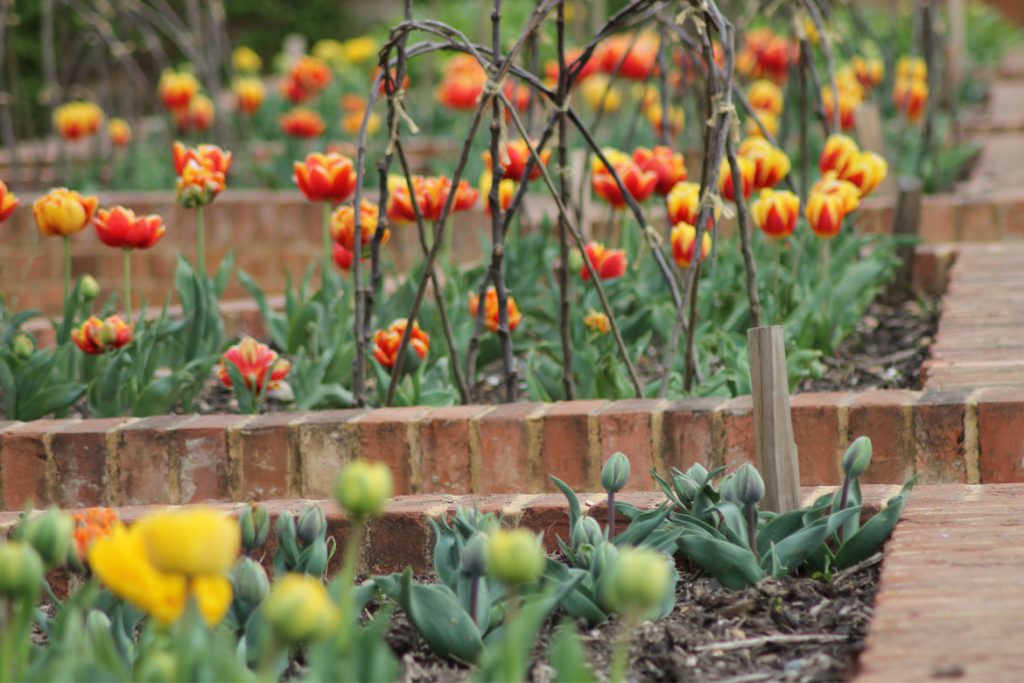
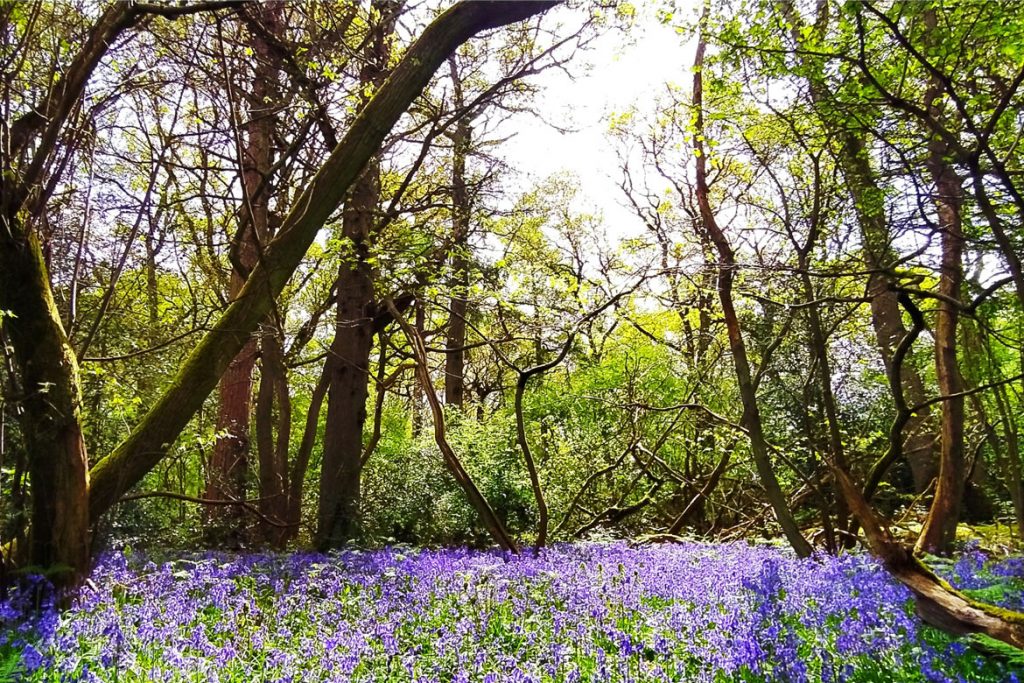
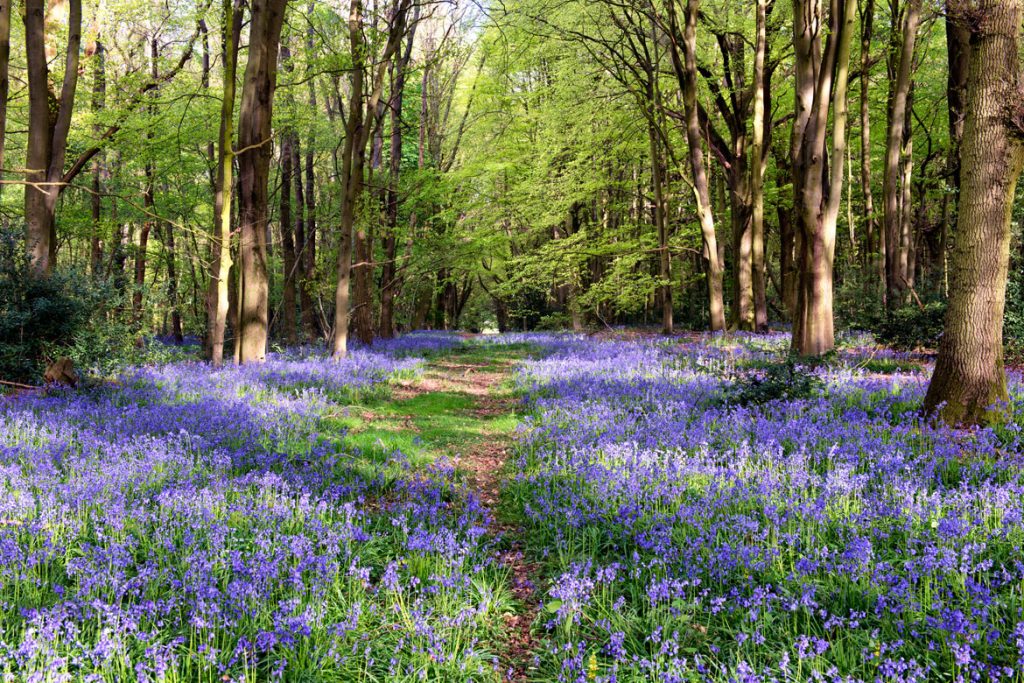
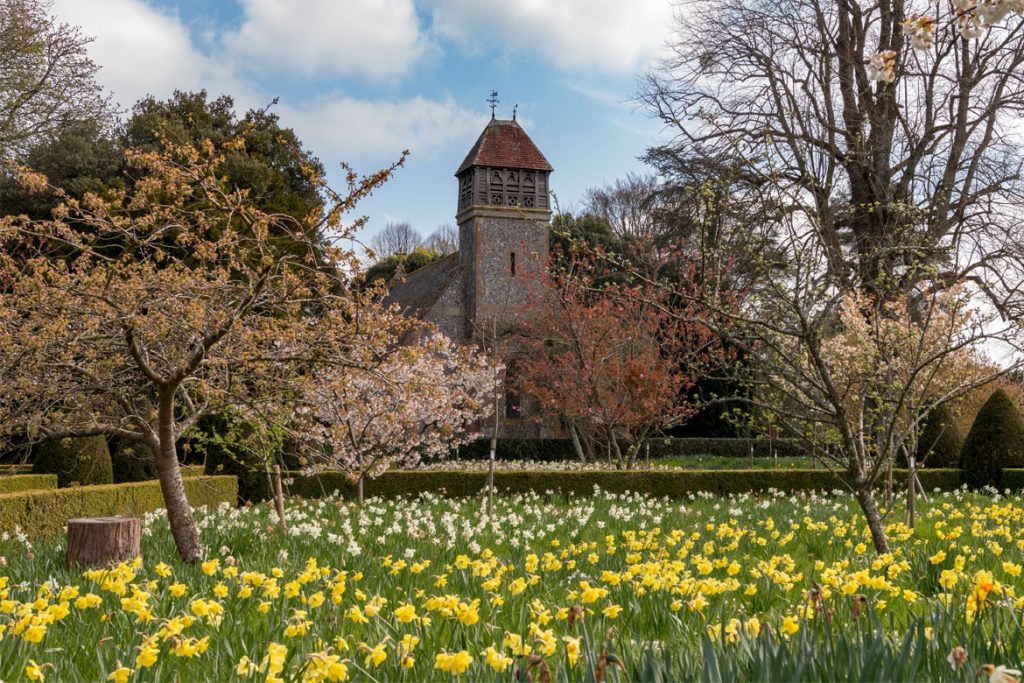
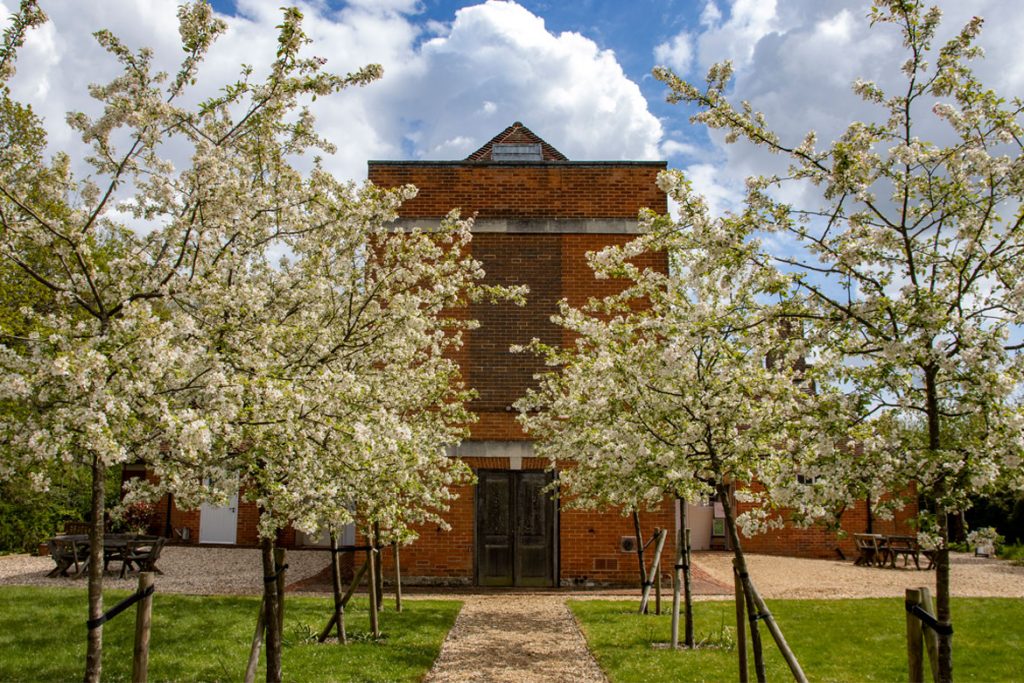
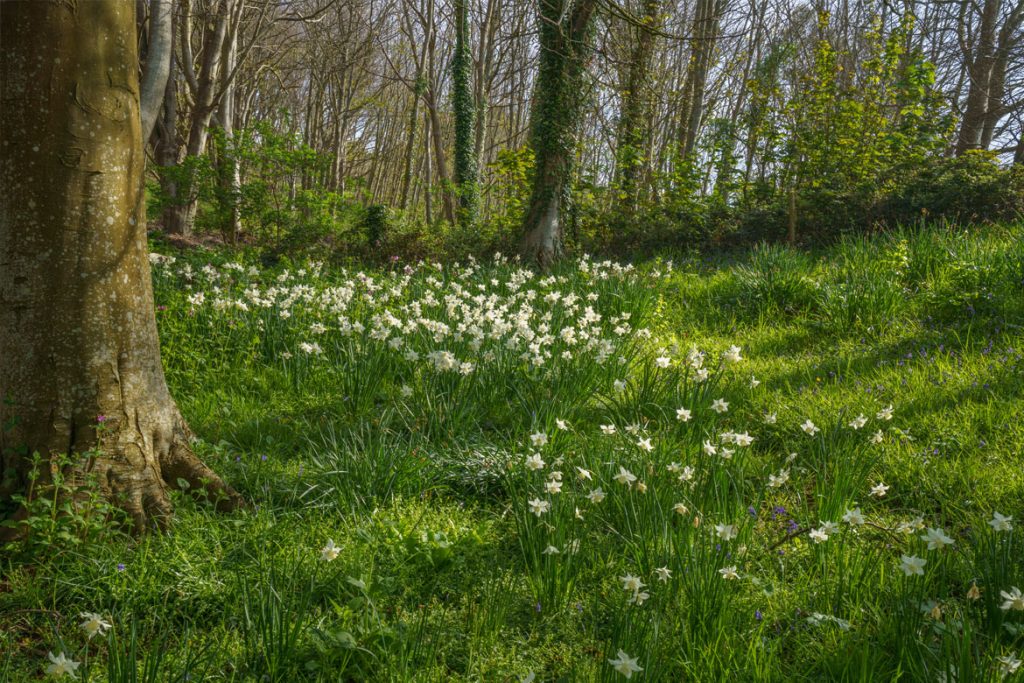

Leave a Reply